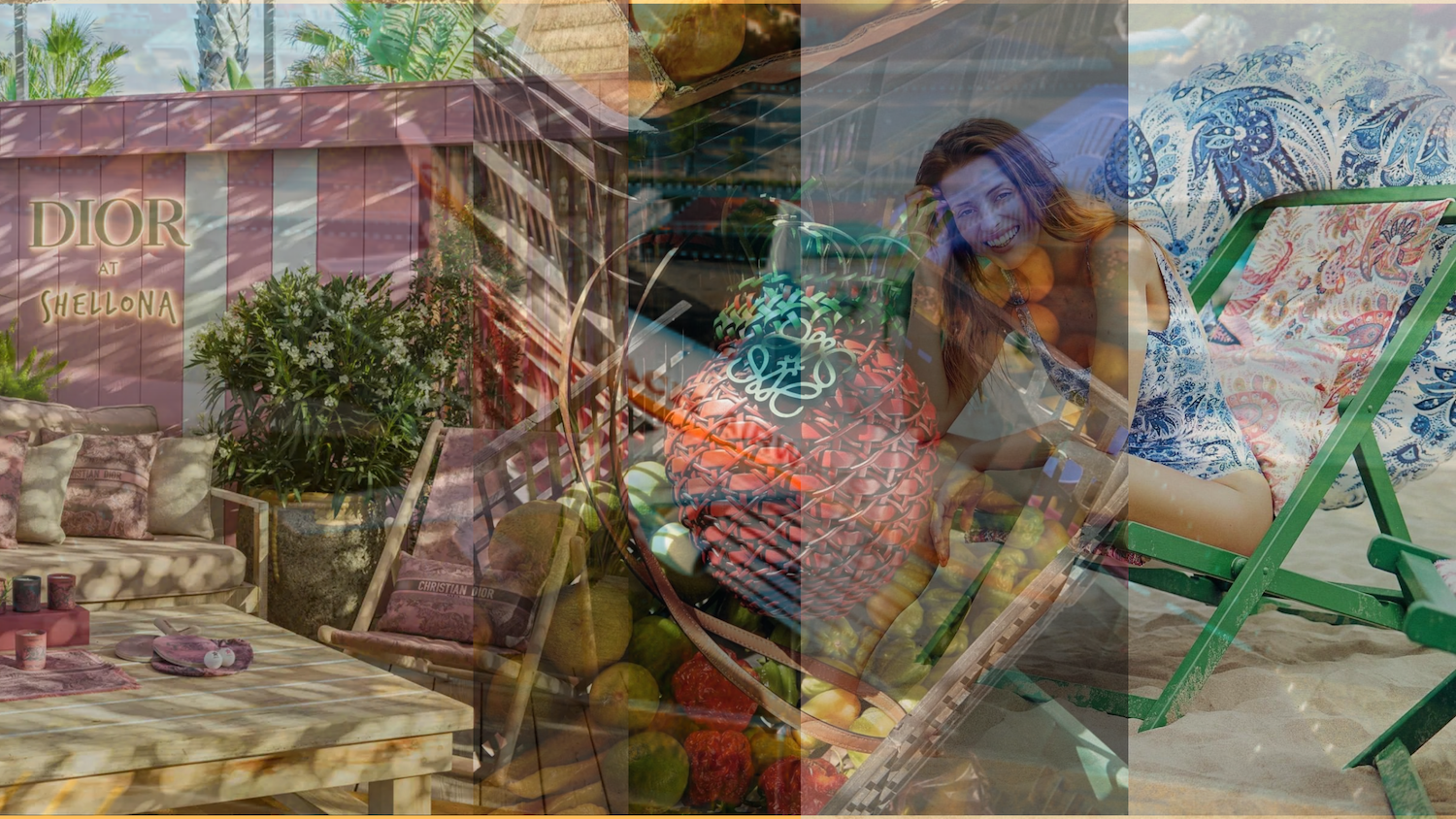
Luxury Brand Investments are becoming less product oriented.
As luxury brands invest in various areas, they aim to create immersive and unforgettable experiences for their customers with a focus on aesthetics, arts, technology, food and services, collaborations, exhibitions and museums, these brands are taking the concept of luxury pop-up shops to the next level.
Investing in Aesthetics:
Louis Vuitton, the luxury fashion house, creates temporary stores that reflect their brand’s essence, using high-quality finishing, premium materials, and exquisite craftsmanship to ensure a luxurious atmosphere. Known for its attention to detail, Chanel, creates pop-up stores that showcase its iconic design elements. The quilted pattern and interlocking CC logo are employed to construct an engaging experience that embodies the brand’s heritage for customers.
Investing in Arts:
Louis Vuitton, the luxury fashion house, creates temporary stores that reflect their brand’s essence, using high-quality finishing, premium materials, and exquisite craftsmanship to ensure a luxurious atmosphere. Known for its attention to detail, Chanel, creates pop-up stores that showcase its iconic design elements. The quilted pattern and interlocking CC logo are employed to construct an engaging experience that embodies the brand’s heritage for customers.
Investing in Technology:
With a focus on technology integration, Burberry brings augmented reality (AR) and virtual reality (VR) facilities to its pop-up stores. These experiences enable clients to virtually explore brand collections, improve engagement and make the shopping experience more interactive. Apple’s pop-up stores are known for their cutting-edge technology, even though they are not typically considered a luxury brand. The sleek design and innovative displays create a luxurious and futuristic ambiance, attracting tech-savvy customers by creating a luxurious and futuristic ambiance.
Investing in Food and Services:
In addition to offering luxury goods, Hermès includes restaurants and cafés within their pop-up stores. This provides guests with a culinary experience that complements the brand’s image of refined elegance and sophistication. The renowned Ritz-Carlton hotel chain partners with luxury brands to create exclusive pop-up hotel experiences that are exclusive to them. Ritz-Carlton’s all-encompassing luxury experience is achieved by combining hospitality and high-end retail, offering customers a complete luxury experience.
Collaborating with Other Brands, Artists, Communities:
Prada works with emerging designers, artists, and local communities to create ephemeral boutiques that showcase their collective creativity. By collaborating with various talents, Prada ensures that every temporary store provides a unique and culturally enriched experience. Fendi frequently collaborates with influential figures from different industries, such as musicians or architects, to create immersive pop-up stores that merge fashion, art, and culture. Collaborations result in exclusive and limited-edition collections that draw fashion-forward consumers.
Investing in Exhibitions, Museums:
Cartier, renowned for its rich history, hosts temporary exhibitions in its pop-up stores, showcasing its iconic jewelry pieces and sharing the brand’s heritage with customers. These exhibitions provide an insight into the world of Cartier and create a sense of exclusivity and refinement. Louis Vuitton, Dior, and Chanel have recently revealed concepts that demonstrate their brand’s story, expertise, and evolution over the decades. All this delivered in an enchanting and immersive atmosphere.
The Ephemeral Luxury Brand Strategy.
Pop-up stores are a popular strategy for luxury brands due to the multiple reasons they provide, including the ability to be temporary and have a limited time to use them. They carefully select the formats that align with their objectives while staying true to their brand identity. By doing so, they can create a sense of exclusivity and uniqueness, capturing the attention and curiosity of consumers.
- Limited Availability: Pop-up stores are designed to be temporary, enhancing the perception of rarity and exclusivity. Customers are aware that the opportunity to experience these unique spaces is fleeting, which creates a sense of urgency and encourages immediate engagement.
- Flexibility and Experimentation: Pop-up stores allow luxury brands to test new markets, products, or concepts without the long-term commitment of a permanent location. This flexibility enables them to adapt and evolve based on customer feedback and market trends.
- Authenticity and Brand Storytelling: Pop-up stores offer a platform for luxury brands to tell their story and connect with customers on a deeper level. By curating a memorable experience through storytelling, these brands create emotional connections, fostering brand loyalty and affinity.
From “Storytelling” to “Storyliving” Spaces.
Luxury pop-up stores have evolved beyond traditional storytelling, transforming into immersive “story living” spaces. These spaces not only communicate a narrative, but also allow customers to live and experience the brand’s story. Luxury pop-up shops rely on various sensory elements, such as visual displays, soundscapes, and touch experiences, to create an immersive environment. By calling on several senses, brands create a totally engaging and memorable experience.
These brands encourage customers to be involved in the brand’s story. Through interactive installations, workshops or customized experiences, clients become an integral part of storytelling, deepening their connection to the brand. Luxury pop-up stores serve as tangible proof of the brand’s essence and values. By giving customers a physical space to live the brand’s story, these ephemeral stores reinforce the brand’s authenticity and uniqueness.
How can luxury brands can activate the sense of “storyliving” in their pop-up stores? 10 directions that can be adopted by brands.
- Immersive Visual Displays: Utilize captivating visual displays that transport customers into the brand’s world. This can include large-scale installations, art pieces, or thematic decorations that evoke the brand’s narrative and create a visually striking environment.
- Interactive Experiences: Engage customers through interactive elements that allow them to actively participate in the brand’s story. This can involve touchscreens, interactive displays, or experiential activities that enable customers to explore and interact with the brand’s products or concepts.
- Multisensory Stimuli: Create a multisensory experience by appealing to multiple senses. Consider incorporating ambient music, tailored scent diffusers, luxurious textures, and carefully designed lighting to enhance the atmosphere and evoke emotions that align with the brand’s story.
- Personalization and Customization: Offer personalized experiences that make customers feel uniquely connected to the brand. This can involve customization stations where customers can personalize products or services, or curated selections based on individual preferences, creating a sense of exclusivity and personal connection.
- Live Performances and Demonstrations: Host live performances, demonstrations, or workshops that bring the brand’s story to life. This can include fashion shows, live music, artist collaborations, or masterclasses that provide customers with an opportunity to witness the brand’s craftsmanship and expertise firsthand.
- Spatial Design and Flow: Carefully design the layout and flow of the pop-up store to guide customers through a curated journey. Consider using different zones or areas that correspond to different chapters or aspects of the brand’s story, creating a sense of progression and discovery.
- Storytelling Elements: Integrate storytelling elements throughout the pop-up store, such as visual narratives, digital content, or physical artifacts that convey the brand’s heritage, values, and inspirations. This helps customers connect with the brand on a deeper level and understand the story behind the products or services.
- Exclusivity and Limited Availability: Emphasize the exclusive nature of the pop-up store by offering limited-edition or unique products, collaborations, or services that are only available for a limited time. This scarcity adds to the allure and encourages customers to engage with the brand’s story while it lasts.
- Seamless Online Integration: Seamlessly integrate the pop-up store experience with the brand’s online presence. This can involve incorporating digital elements, such as QR codes, interactive screens, or social media integrations, to bridge the gap between the physical and digital realms, extending the story beyond the pop-up store itself.
- Thoughtful Staff Interactions: Train staff members to act as storytellers, engaging with customers and guiding them through the brand’s narrative. Staff should be knowledgeable, passionate, and equipped to share the brand’s story effectively, enhancing the overall “storyliving” experience for customers.
Luxury brands can create pop-up stores that go beyond traditional retail experiences by implementing these strategies. They can immerse customers in a world where they can live and participate in the history of the brand, fostering an enduring emotional connection and fostering brand loyalty. By investing in aesthetics, arts, technology, catering, collaborations, exhibits and museums, luxury brands have succeeded in transforming dreams into tangible concepts. The adoption of an ephemeral strategy allows brands to create exclusive and immersive experiences, allowing clients to live and participate in their stories. Luxury pop-up shops serve as temporary showcases of scarcity, reinforcing the attractiveness and attractiveness of luxury brands in the modern consumer landscape.






